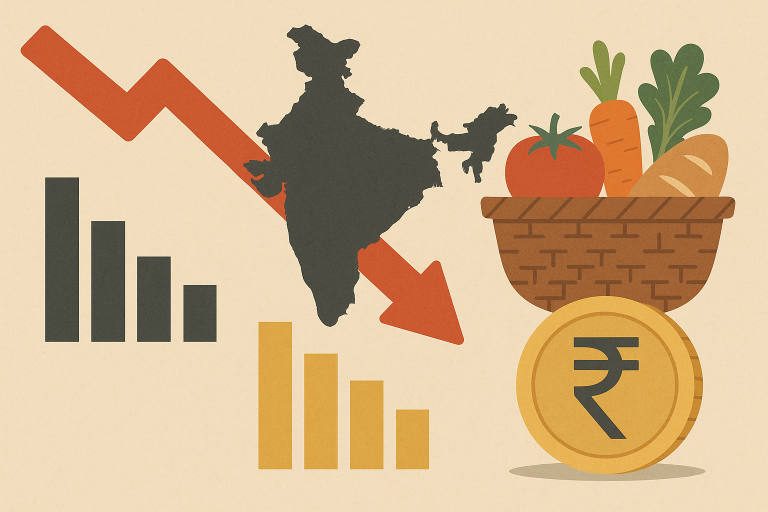India’s inflation cooled to a record low, driven by a steep fall in food prices that has strengthened expectations of an imminent shift in the Reserve Bank of India’s monetary policy.
According to government data released Wednesday, the consumer price index (CPI) increased by only 0.25% year-on-year, missing economists’ projection of a 0.4% rise and marking the slowest pace since the current CPI series began.
The deceleration has positioned food deflation as the primary force behind the broader price correction, prompting analysts to reassess the timeline for future interest rate cuts.
Market movements ahead of the data suggest investor confidence in a rate reduction as early as December.
Food deflation leads CPI decline
Food prices fell by a record 5.02% compared to the same period last year, pulling the overall inflation rate significantly lower.
The drop was compounded by a favourable base effect from high food inflation last year, improved supply due to surplus rainfall, and recent changes in indirect tax policy that lowered the cost of several household items.
The decline marks the deepest food deflation since the current CPI framework was introduced in 2012.
The government’s September tax overhaul played a central role in reducing the prices of essential goods, while better harvest prospects helped ensure greater availability of key commodities.
Together, these factors helped widen the deflationary trend across India’s food basket.
Forecasts revised amid inflation undershoot
The Reserve Bank of India had projected inflation would rise to 4% in the next quarter and close the financial year ending March 2026 at 2.6%.
However, the October numbers have brought those estimates under scrutiny.
Economists now forecast that actual inflation could remain well below the RBI’s target in the months ahead.
Market analysts have also highlighted the limitations of the RBI’s current inflation targeting approach.
Some suggest that relying on a one-year-ahead forecast may not be effective in managing short-term economic shifts in a rapidly changing environment.
The latest inflation data could accelerate policy revisions at the central bank level as downside risks to prices grow.
Markets anticipate RBI rate cuts
Market expectations now reflect a strong likelihood of a 25-basis-point interest rate cut in December, with another likely in February, assuming inflation stays muted.
The RBI had previously paused rate cuts in October after lowering the benchmark repurchase rate by 100 basis points since February.
The fresh inflation data, however, could shift the stance, especially if deflationary conditions persist through the next quarter.
With the possibility of CPI for the financial year dipping below 2%, the window for a more accommodative policy stance has widened.
Lower borrowing costs could follow in the coming months if price trends continue to surprise on the downside.
The post India’s inflation cools to record 0.25% in October, strengthening rate-cut hopes appeared first on Invezz

